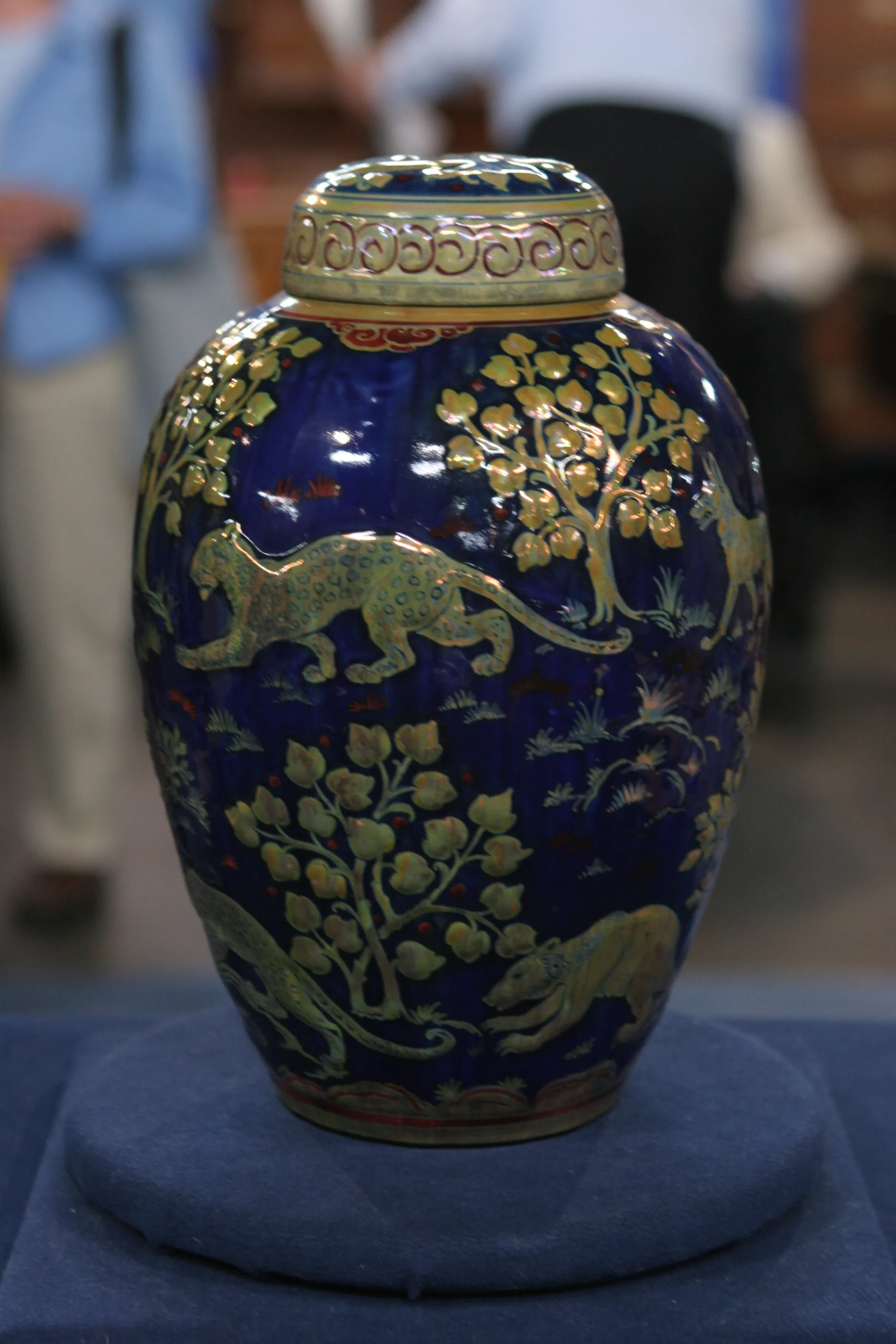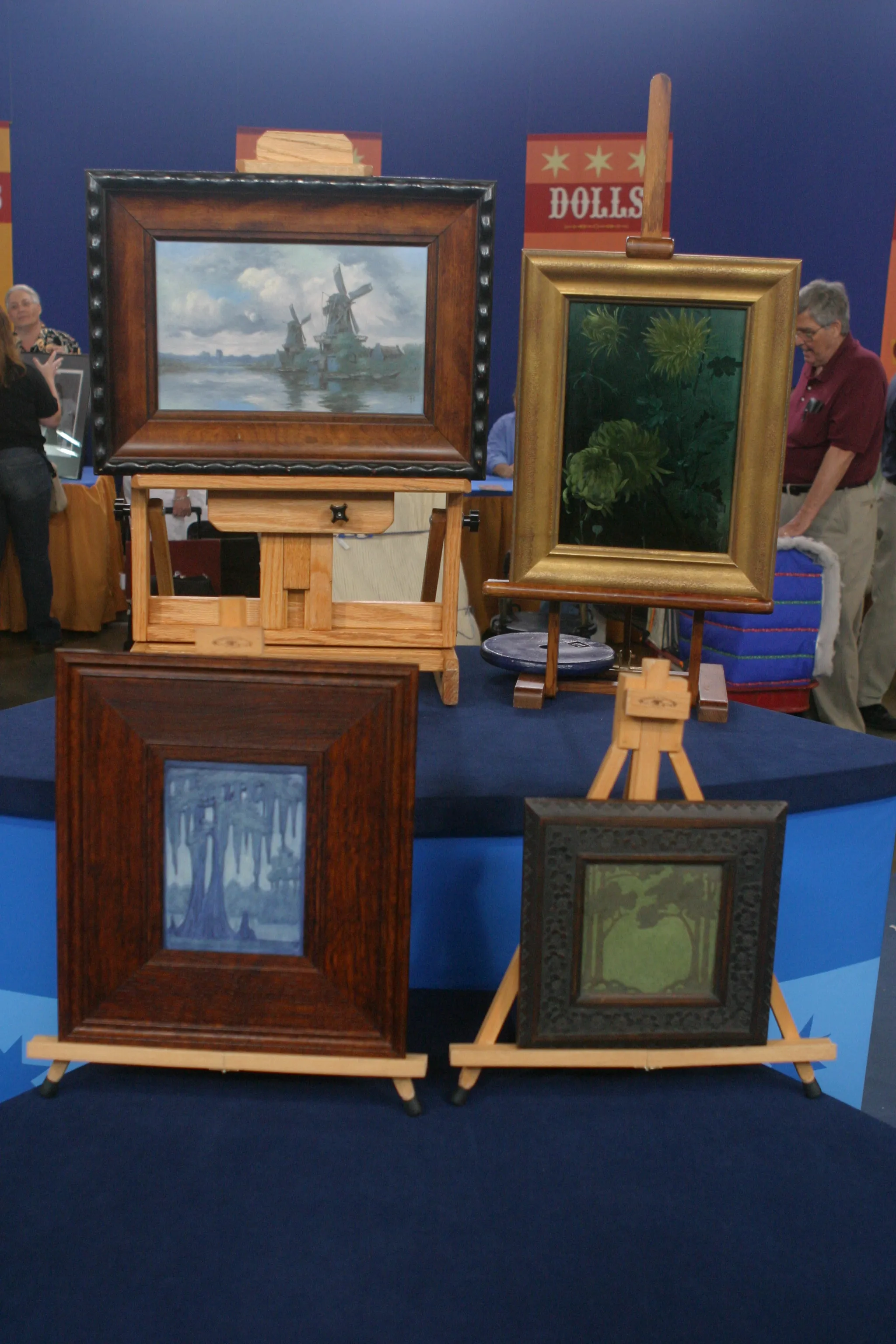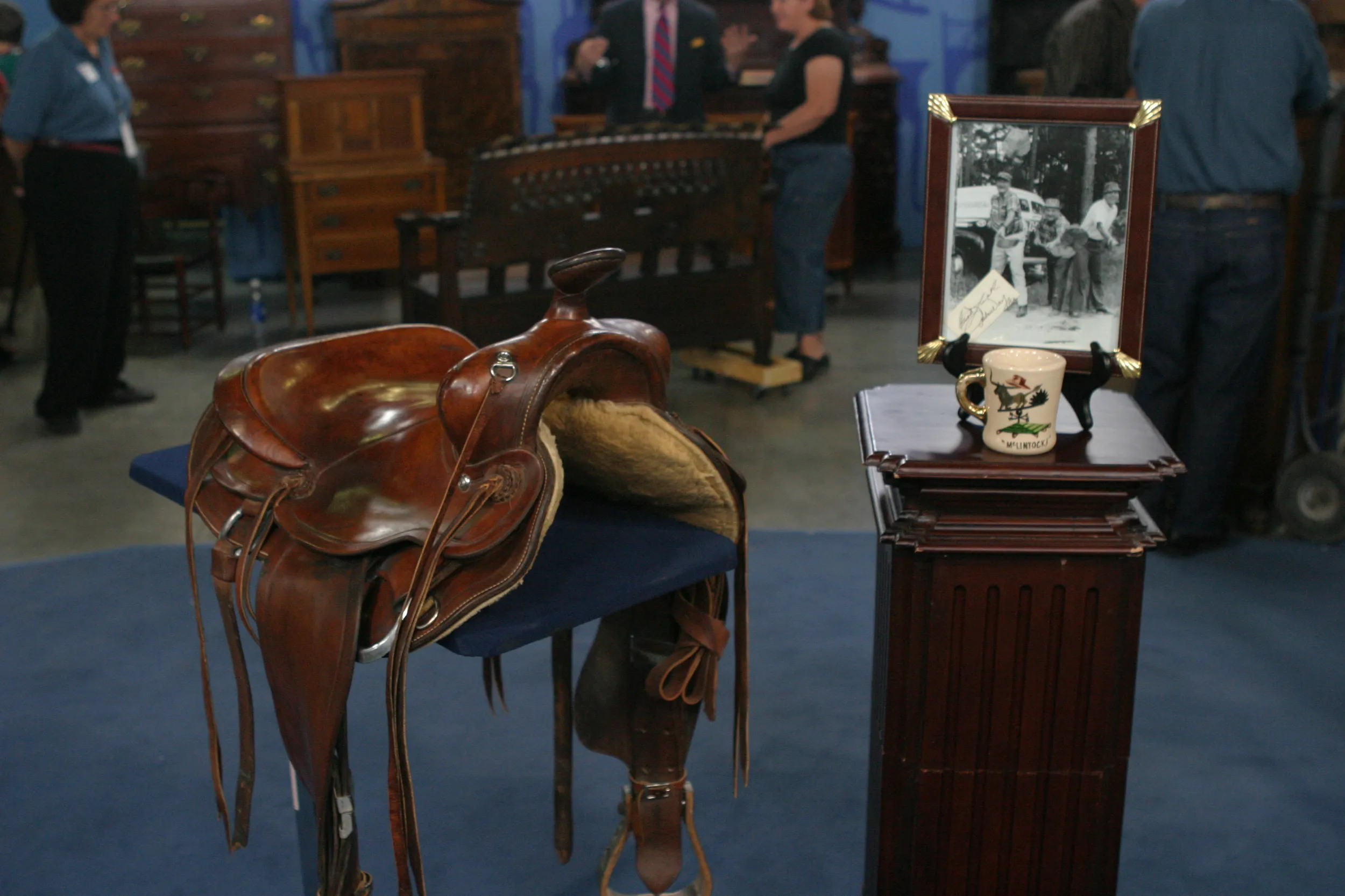GUEST: There was a very special couple in my life, and about 20 years ago, the ROADSHOW was nearby. I asked if they were going. And they were not. And I asked them, what would they take? And they showed me this piece. About ten years ago, they broke up housekeeping. I bought the china cabinet with its contents from them. And this was in there. I'm delighted in their behalf to bring it to the ROADSHOW.
APPRAISER: Okay, finally.
GUEST: Finally.
APPRAISER: So what did you pay for the china cabinet and the contents?
GUEST: $1,000 for the china cabinet and contents.
APPRAISER: And how many pieces do you think were in the china cabinet?
GUEST: Oh, probably 20 pieces, maybe, in the china cabinet, plus the china cabinet.
APPRAISER: Okay, so... Maybe 50 bucks. 50 bucks for everything, for each piece.
GUEST: Sure.
APPRAISER: So what is it that I can tell you that would be helpful?
GUEST: Well, I know on the bottom it says "Haviland." So I don't know anything much more about that. It looks like it's terra cotta or some sort of old pottery.
APPRAISER: Well, you asked about whether Haviland made dinnerware at the same time they were making art pottery. And, essentially, yes, they were. An interesting thing about Haviland is, the company actually was founded by Americans who went to Limoges region in France, because that's where all the good porcelain was coming from. And they wanted a source where they could make pottery and dinnerware. Okay. So it's essentially an American family in France. So the form is probably a flower holder, a bud vase of sorts. It's a little unnecessary, in my opinion, to put flowers in this, but you've got the three openings. Sometimes you'll see a piece like this that'll have decoration on the back. In this case, it's pretty simply just the background color with no decoration. But you can only look at one side at a time.
GUEST: That's right.
APPRAISER: And this side is pretty good. So let's take a look at the mark on the bottom. Haviland Limoges.
GUEST: Yes.
APPRAISER: The term "Limoges" refers to the region where it was made, but that became the word that everybody wanted in terms of underglaze decoration. Cincinnati Limoges, Buffalo Limoges, New York Limoges.
GUEST: Okay.
APPRAISER: I mean, Limoges became the style. Then on the front, we've also got a mark here of whoever decorated this piece.
GUEST: Sure.
APPRAISER: I cannot tell you who that is. I couldn't find that mark. This is called underglaze decoration. And essentially, the scene is painted on here, fired, and then another glaze, a clear glaze, is put over the top of it and fired again. Haviland started doing these underglaze pieces in probably the early 1870s. When Haviland came to America in 1876 for the Centennial Exhibition in Philadelphia, they brought examples of Haviland underglaze painting. Americans had not seen anything like this. Most decoration on pottery was done over the glaze, rather than under the glaze. So people all over the United States were smitten, so this is the impetus for a lot of underglaze decoration in this country. And, really and truly, this is the cause of Rookwood, Wheatley pottery, Bennett, a number of famous people.
GUEST: Wow.
APPRAISER: Because they had never seen anything like this. We know what you paid for the china cabinet and the contents. My sense of value on this, I talked to one of my colleagues, we both think this is a special piece of Haviland. Probably in an auction setting, somewhere between $2,500 and $3,000.
GUEST: Very good, very nice.
APPRAISER: Very good, indeed—that's better than 50 bucks.
GUEST: It is, very good.












